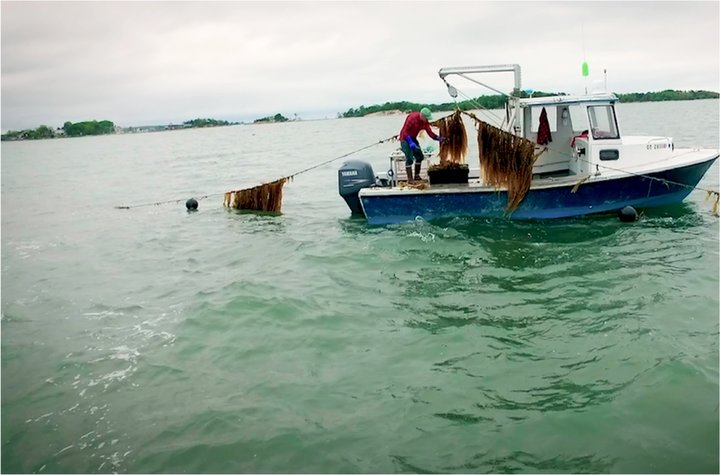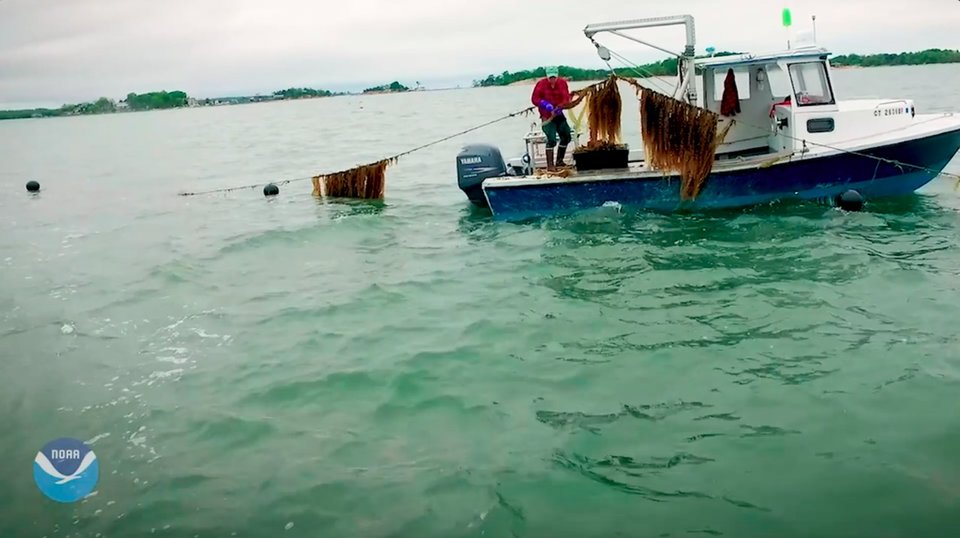
Oceanfarmersusearulertocheckhowmuchtheseaweedhas grown.
Smith’sNewFarm
ThescientistsuggestedthatSmithtrygrowingalargekindofseaweedcalledsugarkelp.Smithwassold.Hewouldbecomeanoceanfarmer.Hewouldn'tbefishing,buthecouldstillbeonthewater.Hewouldownhisownbusiness—andfeed people!
ButSmithwasn’tsatisfiedwithgrowingonlykelp.Hewantedtoproduceavarietyoffood.Howmuchcouldheproducewithinthe40-acreplotofoceanthatherentedinLongIsland Sound?
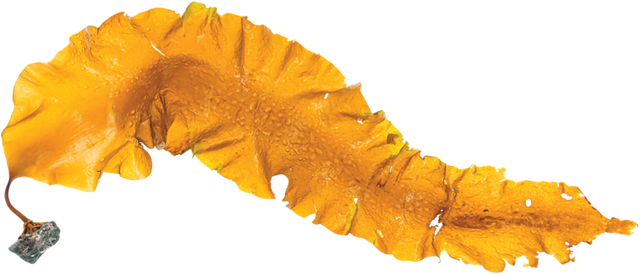
sugar kelp
Smithwonderedifhecouldfarmtheentiredepthofthewater.Therewasalottoconsider.Howdoyougrowkelp?Whatotherkindsoffoodcropscanberaisedalongwithkelp?Howshouldeverythingbearrangedinasmalloceanplot?And,howcanthefarmberunsothatitactuallyhelpstheoceaninsteadofharming it?
After15years,Smithcameupwithafarmingmethodcalled3Doceanfarming.Let’sseehowit works.
3DOceanFarming
Takealookatoneversionofa3Doceanfarm.Nowyoucanseethepurposeofthoseblack buoys.Theyholdupropesthatformanunderwaterframework.Theropessupportkelpthatgrowsdownwardinlong,wavyribbons.Scallopsandmusselsgrowinnetsthathangbetweenthekelp.Andbelowitall,oystersgrowincagesonthe seafloor.
Ropesaresuspended2.4meters(8feet) underwater.
Kelpgrowsfast.It’snolongerthanthewidthofacoinwhenplantedinDecember.Byspringharvest,it’s5.4 meters(18 feet) long.
Anchorskeepthebuoysandropesin place.
Musselsgrowintube-likenetscalledmussel socks.
Scallopsgrowinhanging baskets.
Oystersandclamsgrowincagesonthesandyormuddy seafloor.
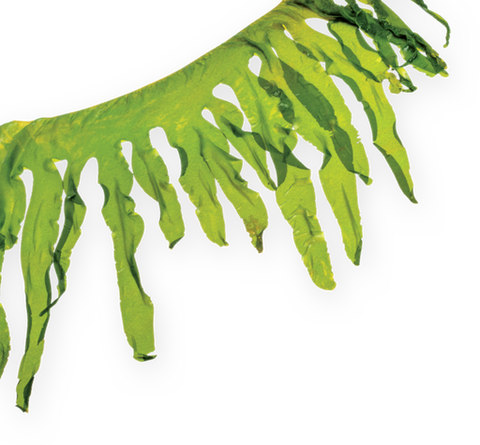
HowDoTheyStart?
Cropsonlandbeginasseedsplantedintheground.Howdokelp,mussels,andotheroceanfarm“crops”gettheirstart?It depends.
Forkelp,thefarmercollectssomekelpeachfallandbringsittoanursery.Therethekelpproducetinyroundspores.Thesporesareattachedtoastringthatisthenrolledaroundatube.Theseedscontinuetogrowonthestringuntil harvest.
It’sdifferentwithmussels.Youngmusselscalledlarvaeswimintheocean.Theyattachthemselvestopartsofthekelp.Therethelarvaegrowsmall,hardshells.Thefarmerremovesthesebabymusselsandloadsthemintomusselsocks.Theypokethroughthemeshasthey grow.
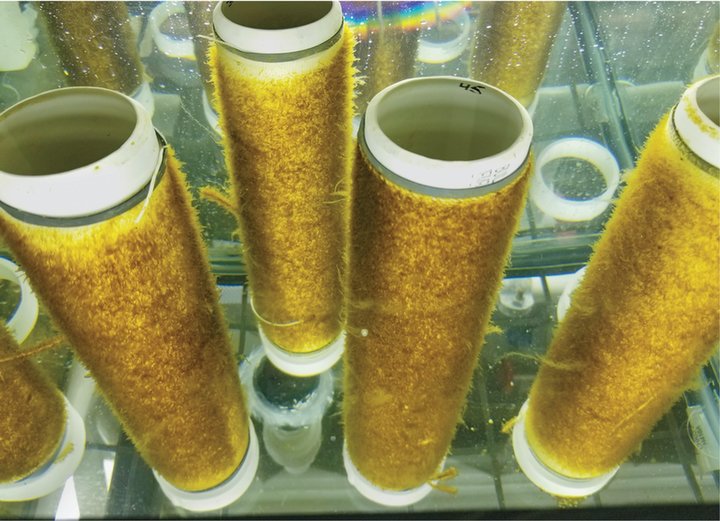
Kelpsporesgrowaroundatubeina nursery.
Othershellfishusuallystartoutlifeinanurserybeforebeingmovedtothe3Dfarmtocontinue growing.
